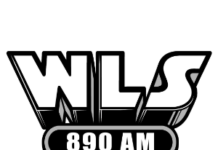
(By Gary Begin) Successful radio commercials and promos paint pictures in words and touch the audience emotionally. But how do you do it in 60, 30, or even just 15 seconds time? How do you write copy for spots that communicate what your listeners need to remember and need to do?
From the secrets of visual copywriting to the insights of audience psychology, here are 9 radio copywriting tips for radio commercials and promos that work for your advertiser or station by combining creativity and effectiveness.
1. Choose one core message
Before you begin to write, know what you want to say and why. The most important questions are:
- Who is the target audience of this message? (Is it aimed at every listener of my station, or only at a specific part of my audience?)
- What’s the main goal of this message? (Should it, for example, introduce something new, increase overall recall, or trigger immediate response?)
- What’s the key Unique Selling Proposition of this message? (Why should the target audience choose this company, brand, product or service over another?)
2. Determine one action step.
Just as important as communicating one clear USP is having a single call to action. Giving people (too many) options creates ‘analysis paralysis’ and cuts the response dramatically. Instead of saying, ”Visit us in Flower Town, call us toll-free at 1-800-FLOWER-SHOP, and visit FlowerShop.com,” just choose the one thing that you want your listeners to do today. Why not direct them to your website, where they can find all the details?
3. Include powerful action motivators
Advertisements for expensive cars are not about expensive cars. They speak to people’s desire to improve or confirm their self-image. There’s a lot of psychology involved to get audiences to do what you want. Most marketers define 7 basic action motivators:
- Anger: ‘Aren’t you frustrated that your money in the bank is worthless? Invest your money here.’
- Exclusivity: ‘Don’t be like everyone else. Show your excellent taste with this exclusive car.’
- Fear: ‘Don’t jeopardize your health. Take this, and make sure you’ll live much longer.’
- Flattery: ‘You deserve to look fantastic and feel great. Treat yourself with this.’
- Greed: ‘Hurry to save 50% on our entire storage. Discount ends Saturday!’
- Guilt: ‘Don’t deny these children what you’re giving yours. Donate now.’
- Salvation: ‘Do you suffer from migraines? This will give you relief.’
Include one in your copy, and your spot will be more effective. Combine several action motivators, and the effect will be even greater.
4. Use a conversational approach
Over the years, audiences have become allergic to anything that even sounds like a commercial. Instead of mentioning your brand or solution right away, have a real conversation with your audience first. Avoid red-flag words like ‘sale’ and typical clichés that turn people off (or turn on their anti-BS mode). Don’t push it. Focus on the listener benefit; not on you and your great product or service.
5. Reflect people’s personal thoughts.
Address one person by saying ‘you’ (instead of ‘we’ or ‘us’) and use the same words as your listeners do in everyday conversations. Get inside the mind of your audience to reflect how they think, so you can trigger silent feedback. If they ‘don’t want to be bald at this age’, why not bluntly ask: “Are you afraid to become bald?” in a spot that promotes a hair loss cure. Don’t replace ‘bald’ it by the fancy ‘dilapidated’ or the euphemism ‘hairless. Tell it like it is.
6. Tell compelling stories (with humor, if possible)
One of the best ways to create an exciting radio commercial or promo is to engage listeners with humor or storytelling (or both). Facts tell, stories sell. But while humor is a great way to add emotion and create rapport, but it should never overrule the message. If the audience talks about the commercial with a friend who asks, “what was it for?”, and they say, “Uh, I don’t know, but it was funny,” it didn’t work.
7. Paint pictures with words
Research shows that most people will only do something after having imagined it first. Visual copywriting helps to engage your listeners and trigger their imagination, so the subject of the spot is in their thoughts as a ‘mental picture’. They already see themselves driving that Mercedes! As the human brain is wired to fill gaps between desire and reality, there’s a good chance that one day they will buy it. Some visual copywriting tips for radio:
- Avoid cliché openings like ‘picture this’ or ‘imagine that’ (and just start with the story instead)
- Name things that people can picture easily, and avoid any abstract words or expressions
- Use active and present tense verbs in the second person (e.g., ‘you can drive this car’)
- Put a noun before its adjectives; not after (e.g., ‘the water is crystal clear and blue’)
8. Throw out all waste
It’s nice to win an award for the best-written commercial, but it’s better to turn an advertiser into a life-long client. Write to communicate; not to impress. Cut the clutter. Throw out the phone number (unless it’s 1-800-FLOWERS). Advise your client to have a URL with easy recall (e.g., FlowerStore.com).
9. Widen your creative imagination
To create output, you need input. One part is seeing movies, attending concerts, and reading magazines to stay in touch with today’s pop culture and current affairs. Another part is living life. Get out of your bubble and have conversations and experiences that expand your horizons.
Gary Begin is Founder/President of Sound Advantage Media, a radio/podcasting
consulting firm. He possesses over 40 years professional radio broadcasting &
voice over experience. Contact Gary at [email protected] and
731-437-0536. Read Gary’s Radio Ink archives here.






Great article with a lot of excellent ideas!!
This guy’s spinning gold. Basic but essential truths.
This guy’s spinning gold. Basic but essential truths
Good stuff, Gary! I also encourage my sales staff to write like they speak. If they wouldn’t use cliches like exquisite, delectable, sumptuous, etc. when describing a business to a friend DON’T write it.
And all you have to do is look at the Amazon packages on porches to know that “locally owned since (year)” doesn’t mean much (if anything) anymore.
BB
Many good points here, refreshing to see ideas from a programmer on copy writing!
This is “spot on”, Gary (pun very much intended). We need to be better storytellers in our copy for advertisers; putting as much care and attention as we do in our station brands. And I’m blown away by how many still include phone numbers for non-alliterative ones and the ubiquitous “www.” before the website.
Put your trust in the astute insights of one of the best consultants in the business. You need him more than ever in this ever-changing industry.